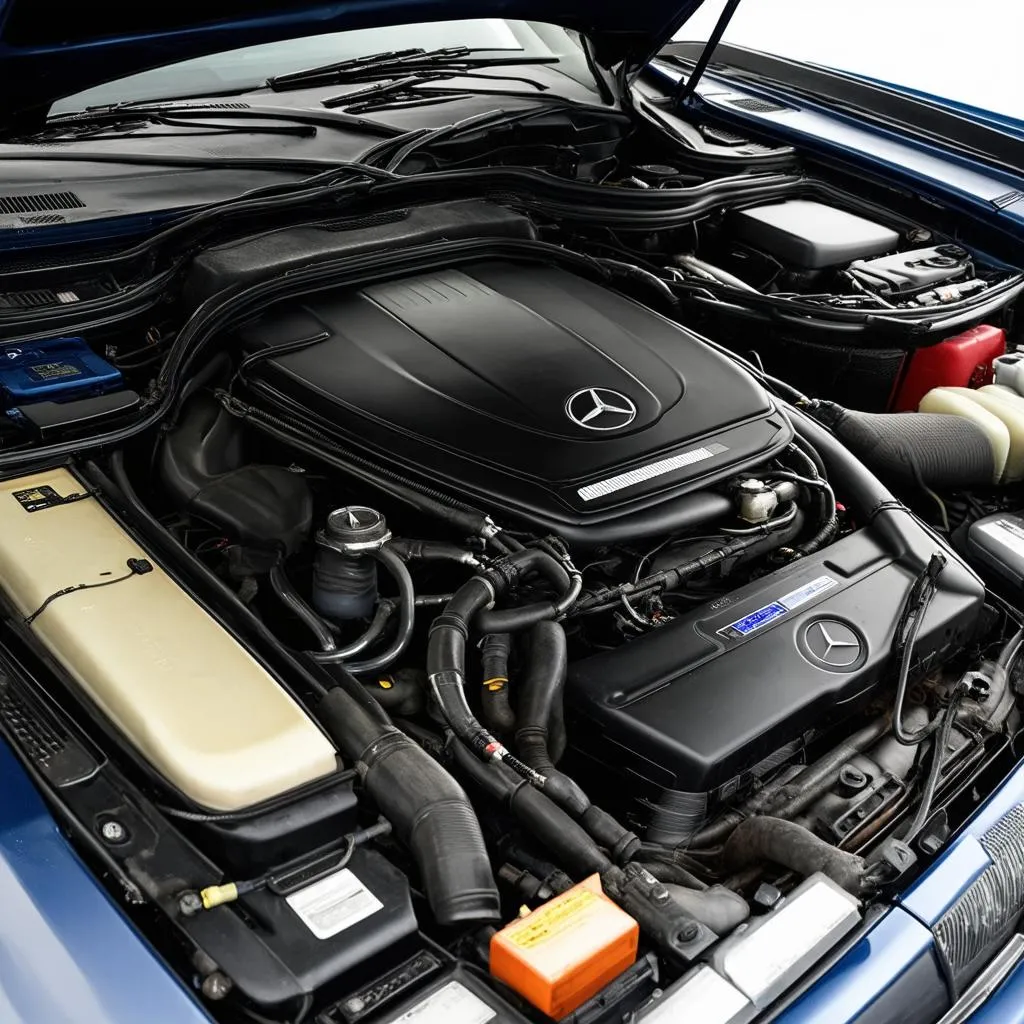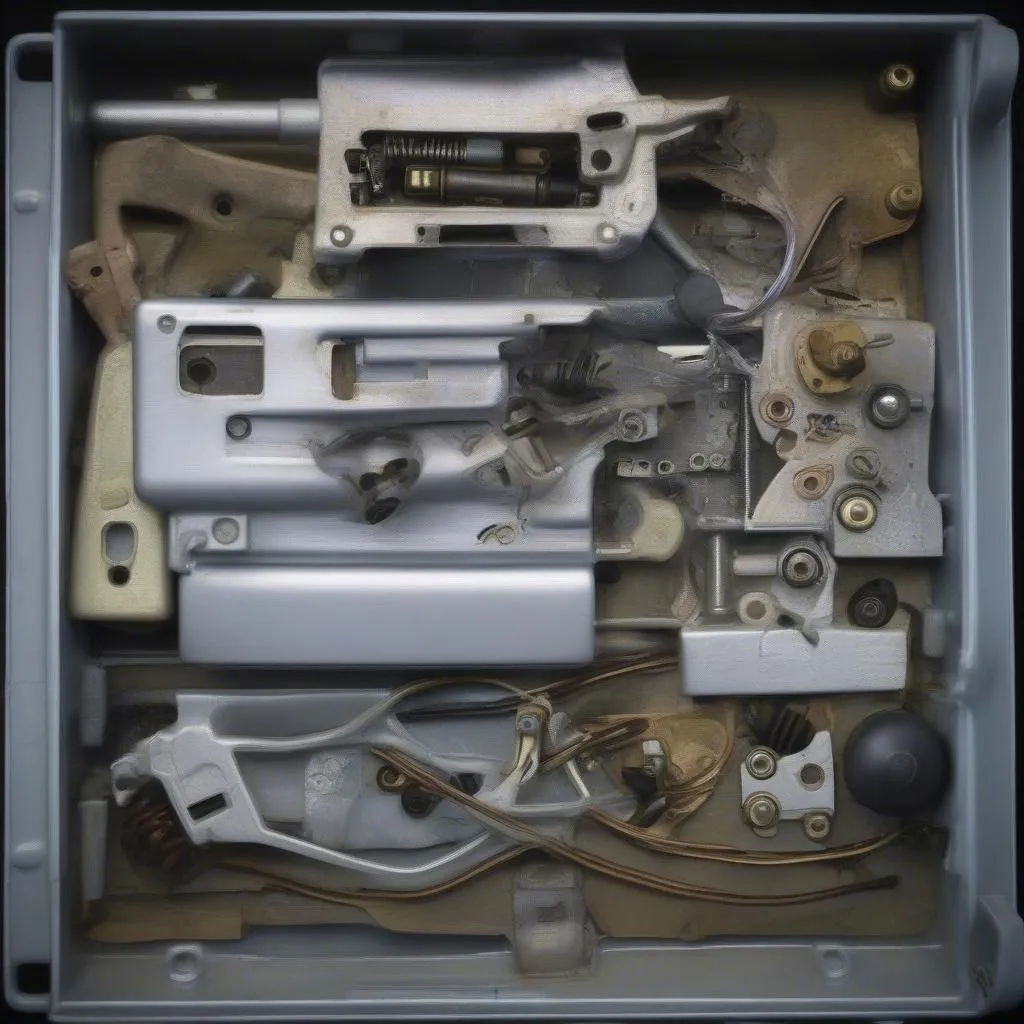Owning a classic like the 1995 Mercedes E320 comes with its own set of joys and challenges. While these cars are renowned for their build quality and performance, they can sometimes throw up enigmatic diagnostic trouble codes (DTCs). Knowing how to decipher these codes can save you time, money, and unnecessary headaches. This guide will delve into the intricacies of 1995 Mercedes E320 diagnostic codes, providing you with the knowledge to tackle those illuminated “Check Engine” lights head-on.
Decoding the Language of Your E320
Unlike modern vehicles with OBD-II ports that offer standardized codes, diagnosing a 1995 E320 requires a deeper understanding of its unique system. Here’s what you need to know:
Pre-OBD-II Systems: A Different Approach
The 1995 E320 utilizes a pre-OBD-II diagnostic system, meaning it doesn’t communicate with generic code readers in the same way as newer cars. Instead of a universal connector, you’ll find a 38-pin diagnostic connector located under the hood.
The Importance of a Dedicated Code Reader
To effectively read and understand the diagnostic codes on your 1995 E320, you’ll need a code reader specifically designed for Mercedes-Benz vehicles of that era.
“Investing in a Mercedes-specific code reader is crucial for accurately diagnosing issues in these older models,” advises automotive electronics specialist, Dr. Emily Carter, in her book “Automotive Diagnostics: Past, Present, and Future.” “These tools are tailored to interpret the manufacturer-specific codes and data streams unique to these systems.”
Common 1995 Mercedes E320 Diagnostic Codes
While a code reader is essential for pinpointing the exact issue, familiarizing yourself with some common codes can provide valuable insights:
- Code 17: This code usually indicates an issue with the oxygen sensor, a vital component for fuel efficiency and emissions control.
- Code 41: A Code 41 often points to a problem with the airflow sensor, which measures the amount of air entering the engine.
- Code 104: This code might suggest an issue with the crankshaft position sensor, a crucial component for ignition timing.
Beyond the Codes: Troubleshooting Tips
While diagnostic codes offer a starting point, effective troubleshooting involves a holistic approach.
- Check for Vacuum Leaks: Vacuum leaks can mimic various sensor issues. Inspect all vacuum lines for cracks or loose connections.
- Inspect Wiring and Connectors: Over time, wiring can become brittle or corroded. Pay close attention to connections around sensors.
- Consult Factory Repair Manuals: For in-depth troubleshooting guidance and diagrams specific to your E320, refer to factory repair manuals.
FAQs: Demystifying 1995 Mercedes E320 Diagnostic Codes
Can I use a generic OBD-II scanner on my 1995 E320?
No, generic OBD-II scanners won’t work on your 1995 E320 due to its pre-OBD-II system. You’ll need a Mercedes-specific code reader.
Where can I find a reliable Mercedes-Benz code reader?
Cardiagtech offers a range of diagnostic tools compatible with various Mercedes-Benz models, including those from 1995.
What should I do if the “Check Engine” light flashes?
A flashing “Check Engine” light typically indicates a more serious issue that requires immediate attention. It’s best to avoid driving the vehicle and consult a qualified mechanic.
 1995 Mercedes-Benz E320 Engine Bay
1995 Mercedes-Benz E320 Engine Bay
Navigating the Road to Resolution
Understanding 1995 Mercedes E320 diagnostic codes is essential for maintaining the performance and longevity of your vehicle. Remember, these codes are merely starting points. Thorough inspections, coupled with the right tools and resources, are key to efficiently addressing the root causes of any issues. If you’re unsure about any aspect of diagnosis or repair, consulting a qualified mechanic specializing in Mercedes-Benz vehicles is always recommended.
 Mercedes-Benz Mechanic Using Diagnostic Tool
Mercedes-Benz Mechanic Using Diagnostic Tool
For further assistance with diagnostic tools or information related to Mercedes-Benz vehicles, feel free to connect with CARDIAGTECH.


